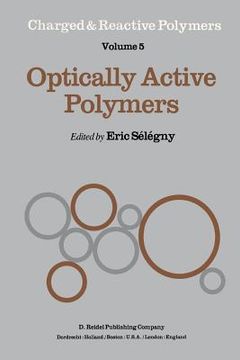Share
Optically Active Polymers
Sélégny, E. (Author)
·
Springer
· Paperback
Optically Active Polymers - Sélégny, E.
Choose the list to add your product or create one New List
✓ Product added successfully to the Wishlist.
Go to My Wishlists
Origin: U.S.A.
(Import costs included in the price)
It will be shipped from our warehouse between
Friday, July 19 and
Friday, July 26.
You will receive it anywhere in United Kingdom between 1 and 3 business days after shipment.
Synopsis "Optically Active Polymers"
The first four volumes of the series on 'Charged and Reactive Polymers' have been devoted to polymers in solution (Voh. I and II) or in gel and membrane forms (Vols. III and IV). In correlation with charges, other physical or chemical properties of macro- molecules have been considered. Understanding of charge and hydrophobic effects is equally important for synthetic and biopolymers or their systems. Optically Active Polymers are related to problems of the same class, since optical activity is an inherent property of both natural macromolecules as well as a great variety of polymers synthesized in the Jast twenty years. Optical activity is a physical spectral property of chiral matter caused by asymmetrical configurations, conformations and structures which have no plane and no center of symmetry and consequently have two mirror image enantiomeric forms of inverse optical rotation. The racemic mixture of chiral enantiomers is optically inactive. The most common form of optical activity was first measured at a constant wavelength by the angle of rotation of linearly polarized light. More recently the measurements have been extended to the entire range of visible and attainable ultraviolet regions where electronic transitions are observed, giving rise to the ORD technique (Optical Rotatory Dispersion). The Cotton effects appear in the region of optically active absorption bands; outside of these bands the plain curve spectrum is also dependent on all the electronic transitions of the chromophores.
- 0% (0)
- 0% (0)
- 0% (0)
- 0% (0)
- 0% (0)
All books in our catalog are Original.
The book is written in English.
The binding of this edition is Paperback.
✓ Producto agregado correctamente al carro, Ir a Pagar.

